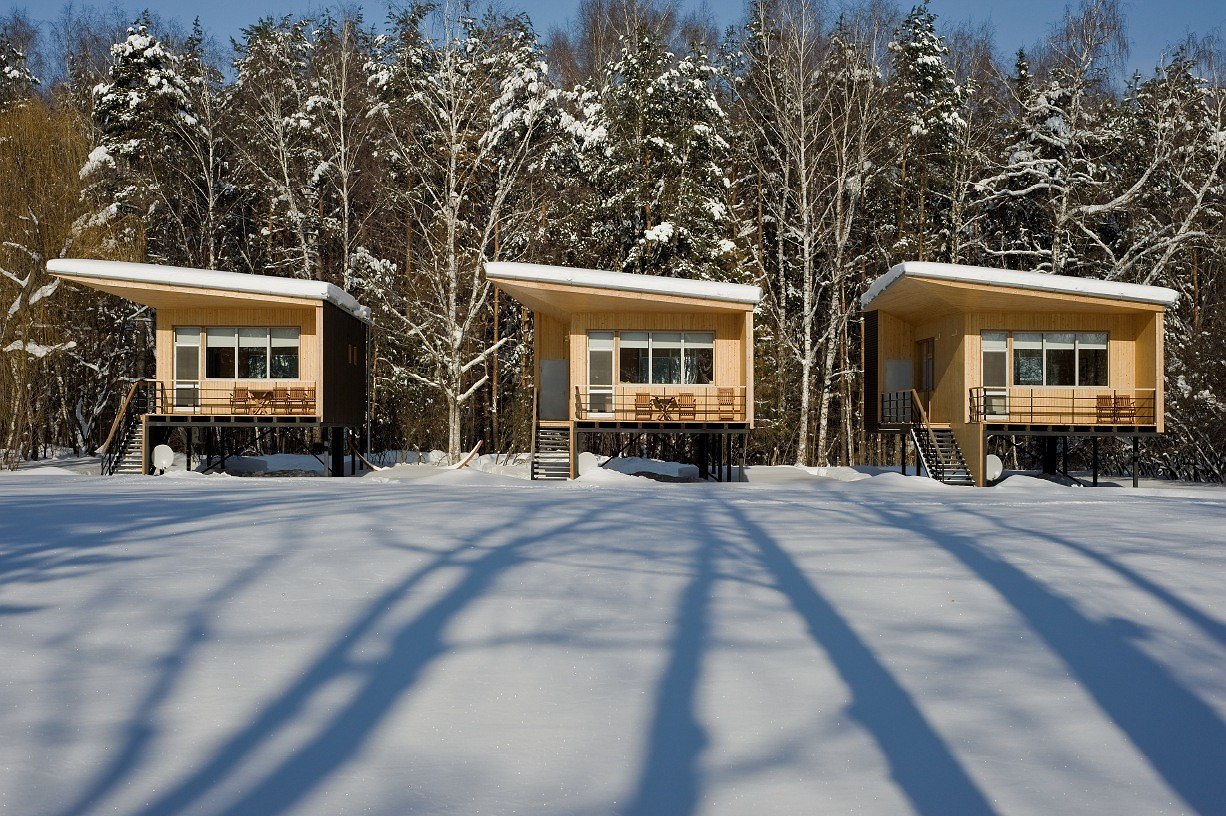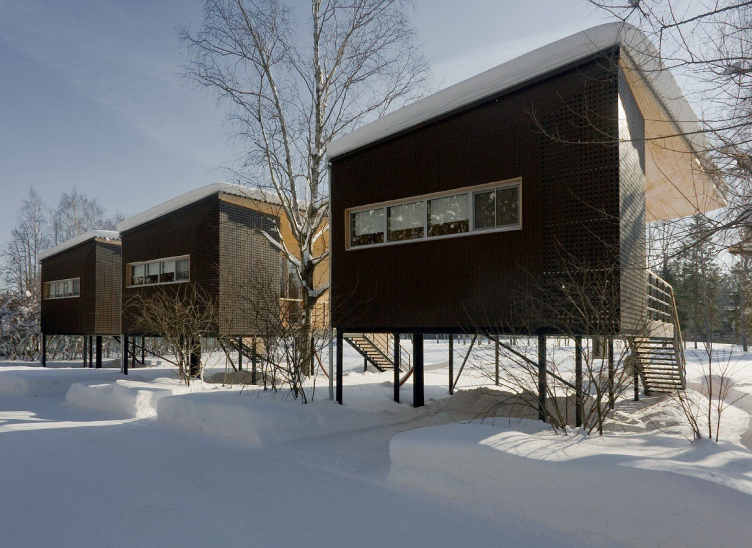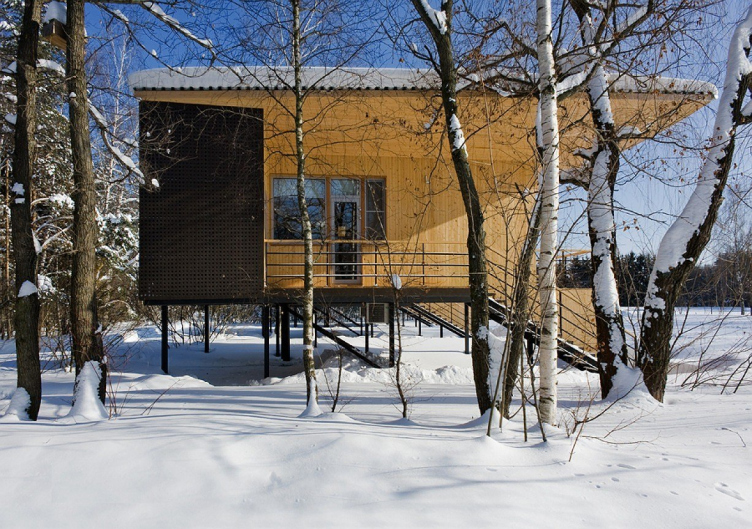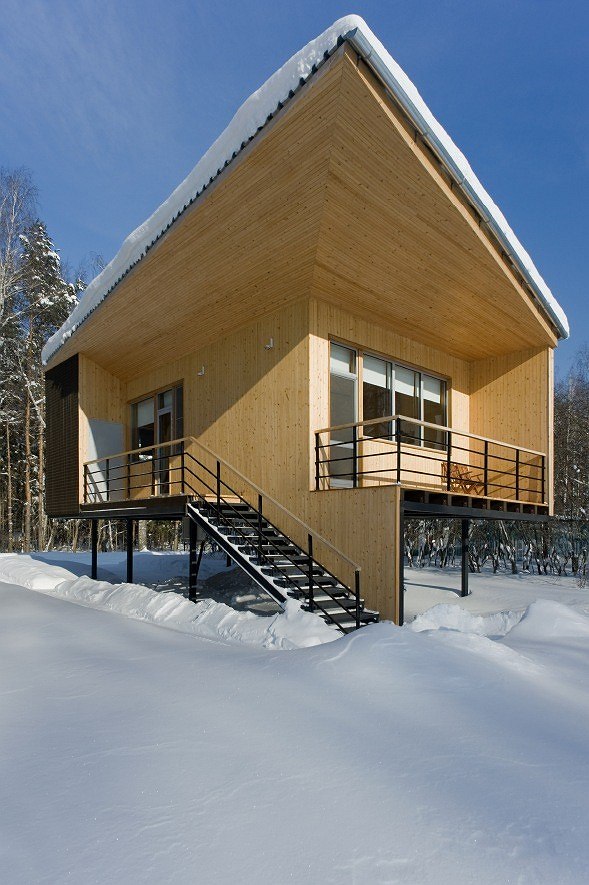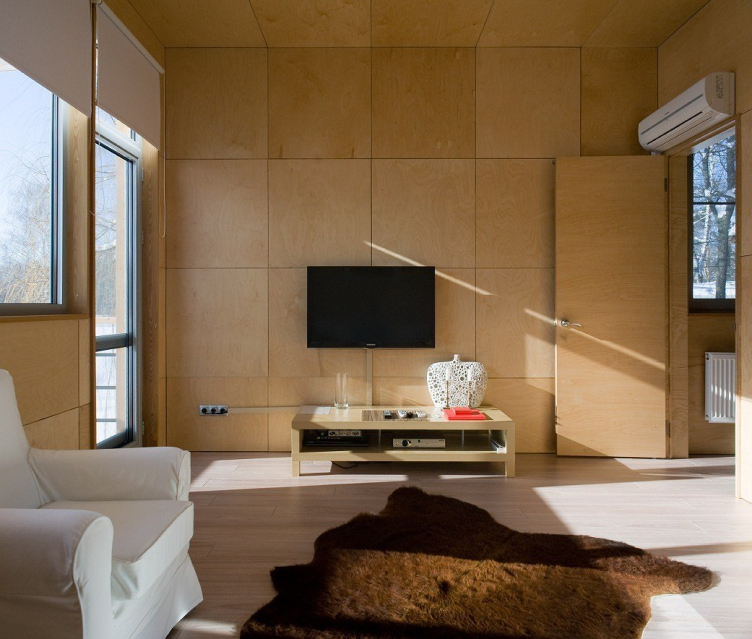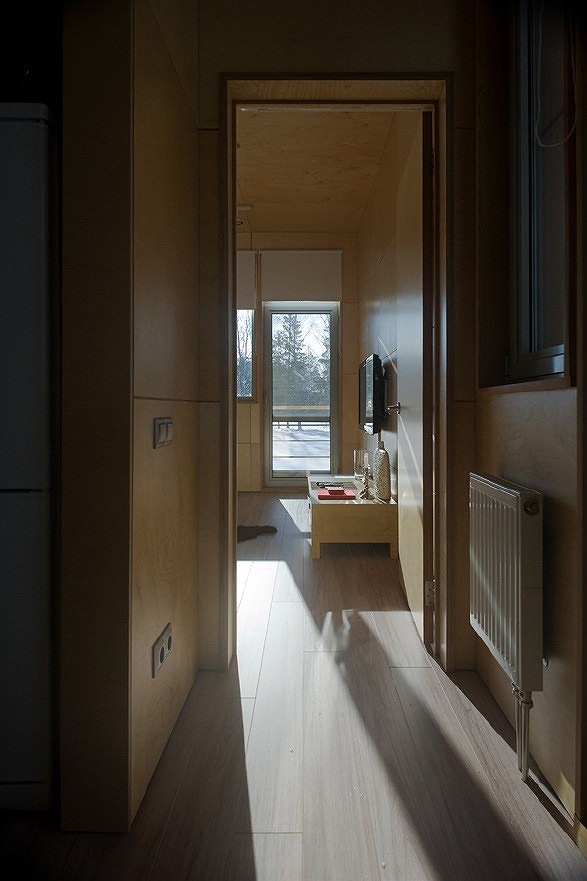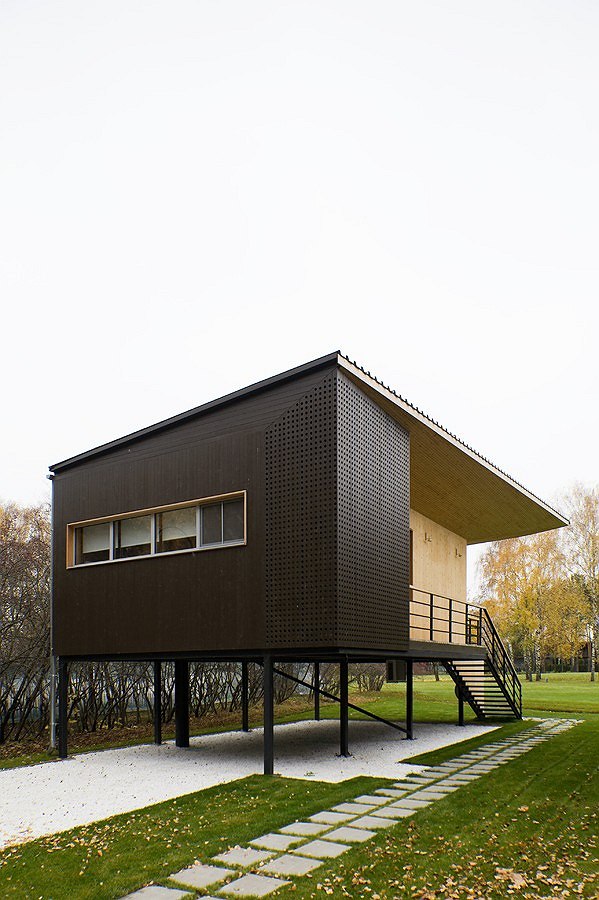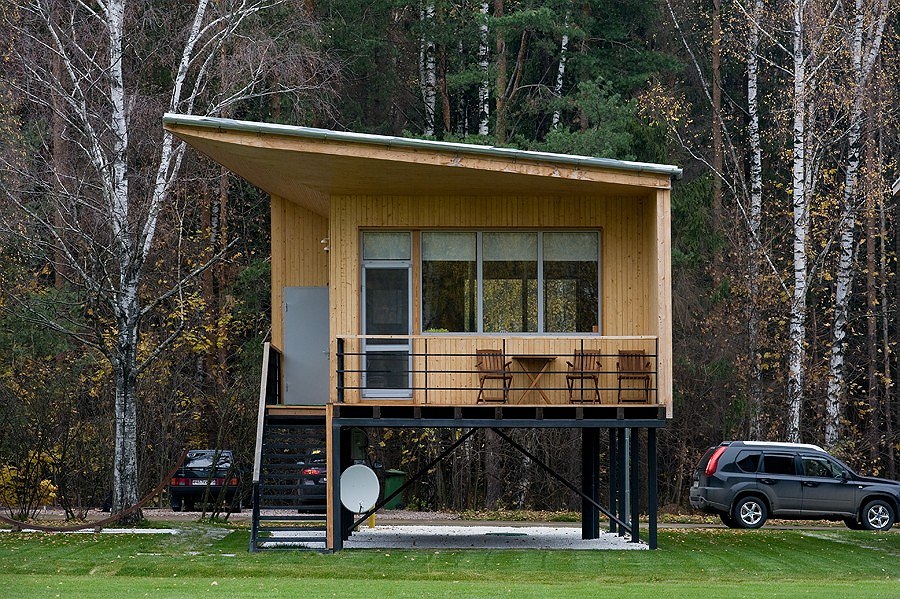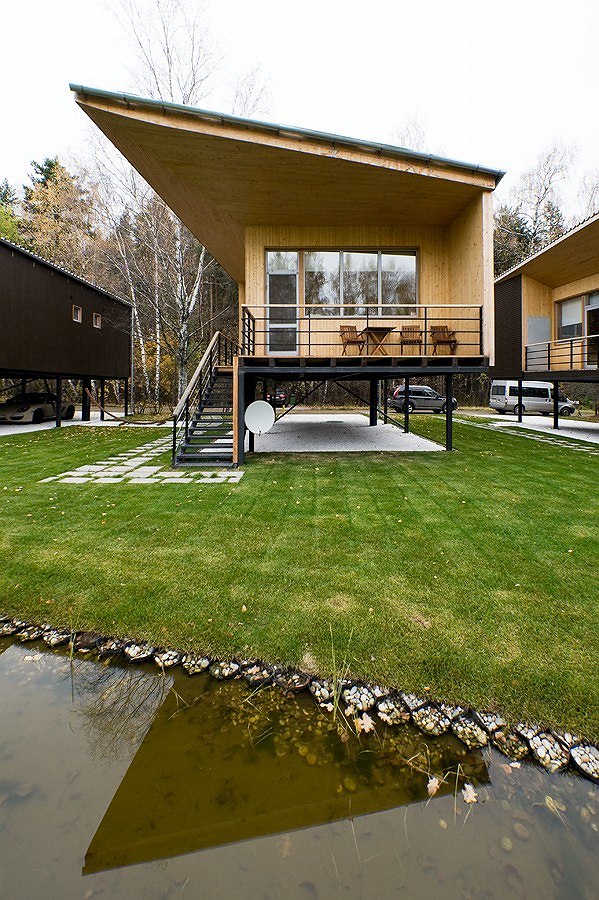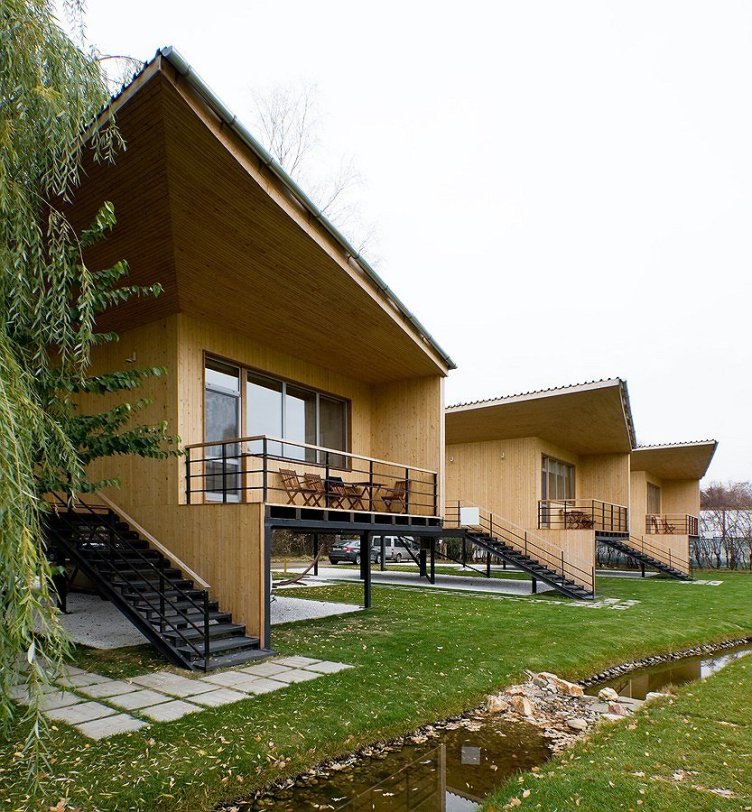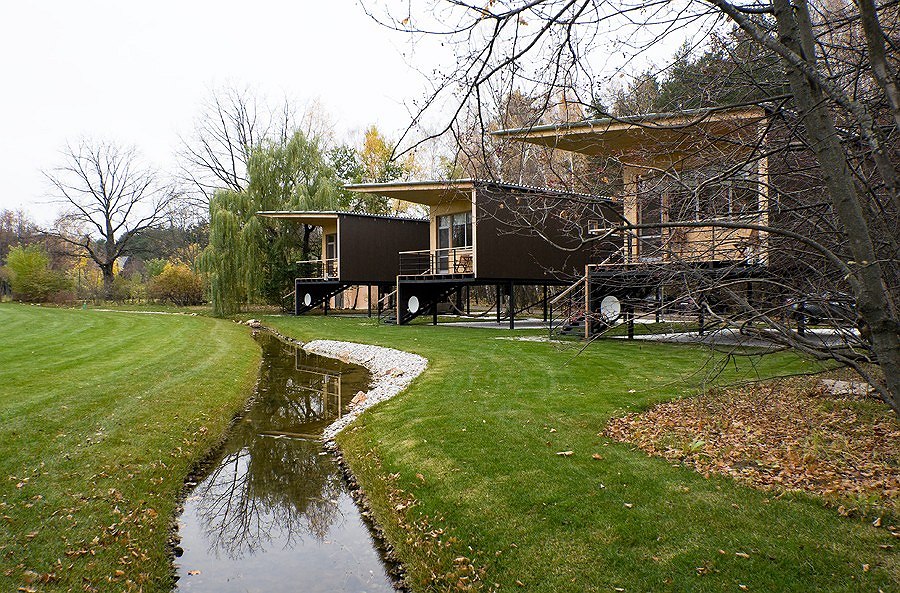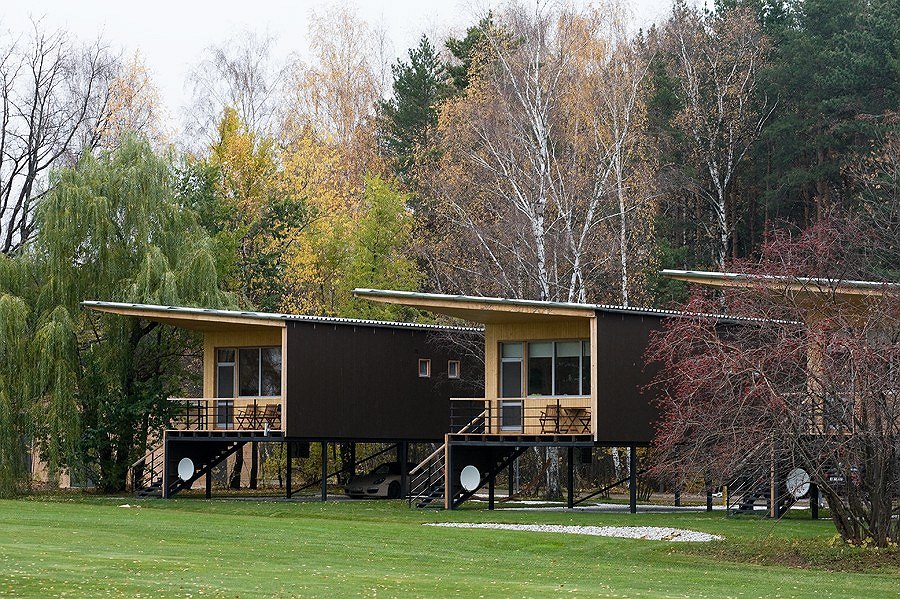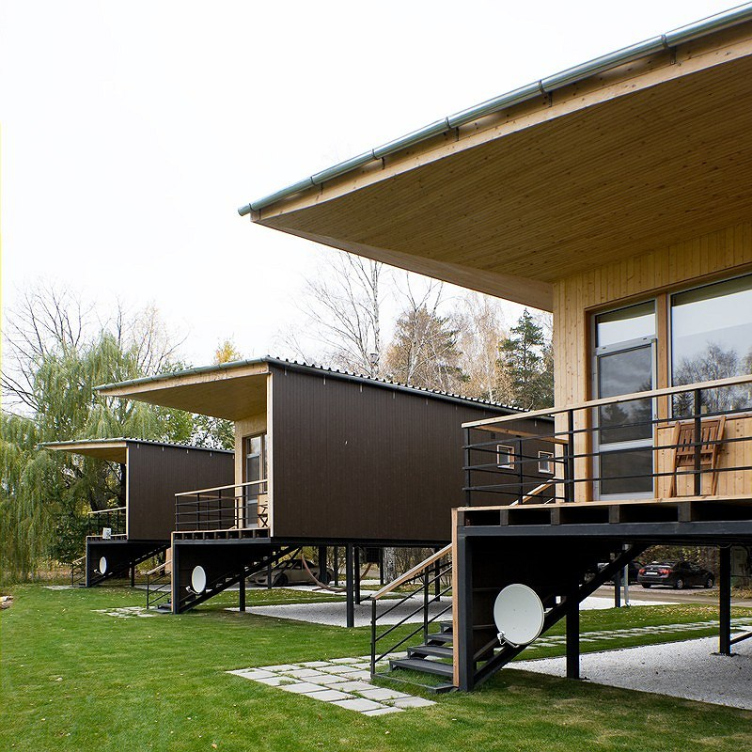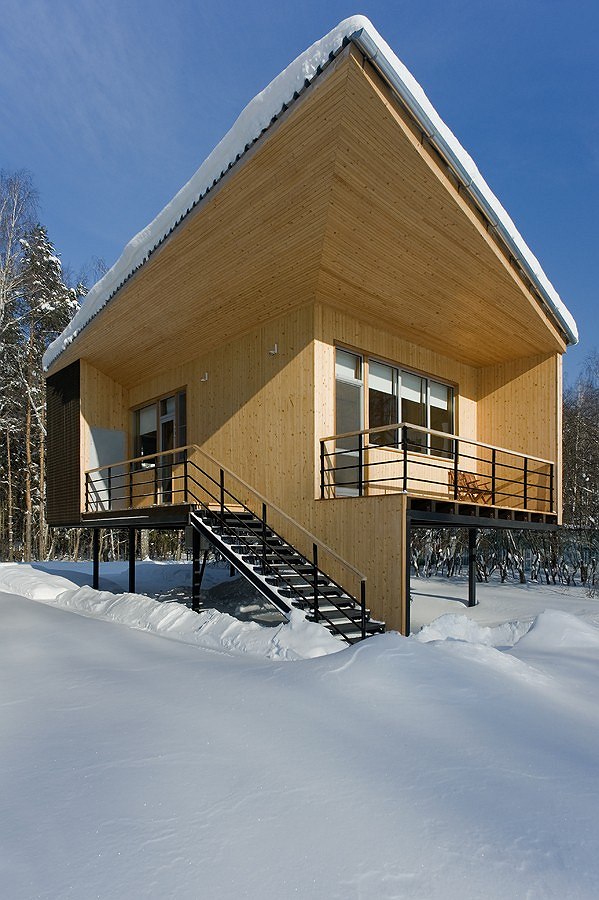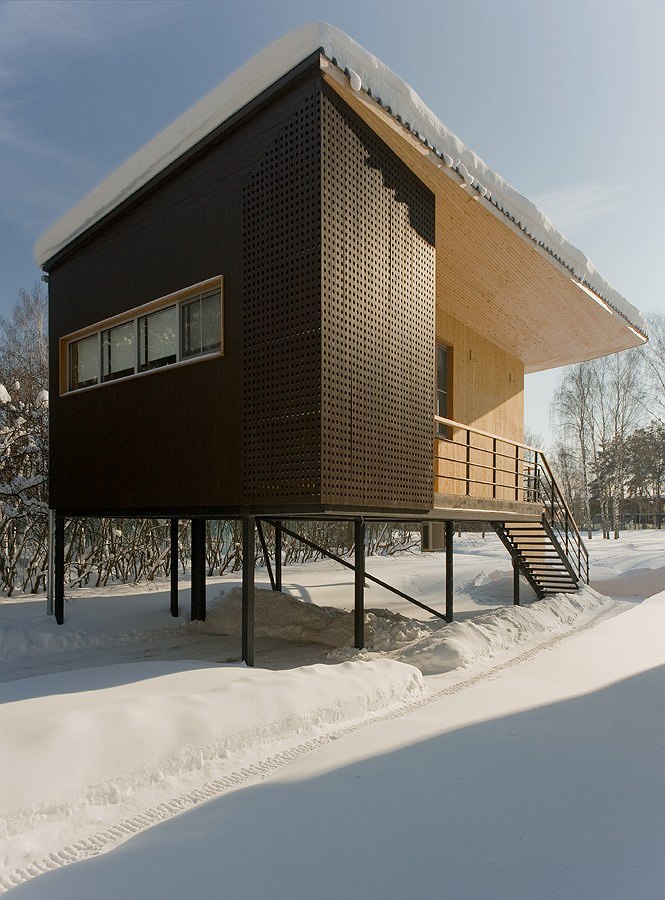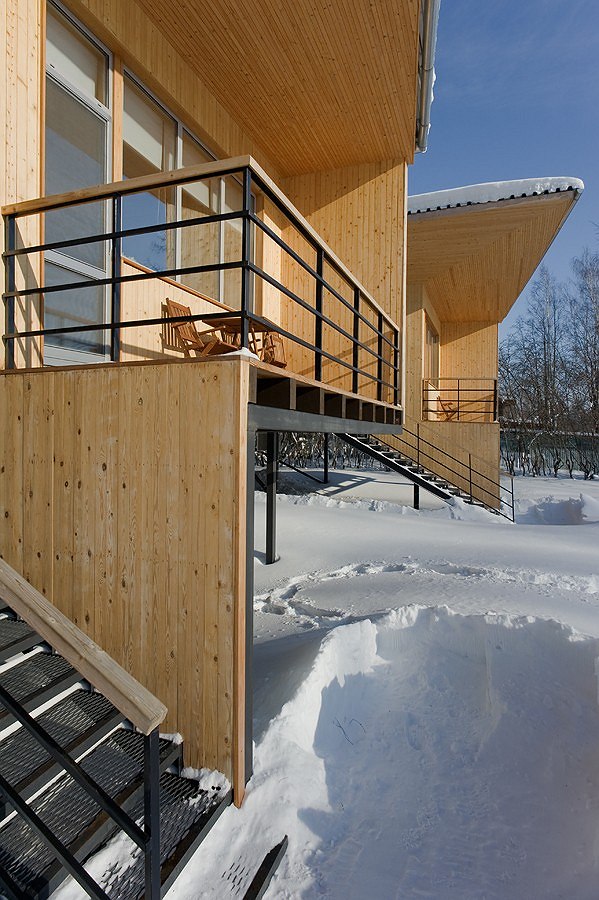Totan Kuzembaev reminisces that
initially it was planned that the guest houses would be placed in the woodland
that, while the houses were still being designed, was on the commissioner’s
lease. Accordingly, the houses were designed with consideration of their presumable
location – in particular, the architect was to “introduce” the new volumes into
the protected green environment as tactfully and as unobtrusively as possible. Hence
the “birdhouses” – what other kind of houses, besides the birds’ ones, could
boast such integration with the natural environment? The architect designed for
them the thin metallic “legs” – the piles over two meters tall; according to
Totan Kuzembaev, this would have been enough to preserve, for somebody who is
walking through the woods, not only the clear passage but also the overview of
the scenic landscape and the skyline. It was also planned that from the forest side
the facades of the houses will be painted almost-black dark-brown to match the
color of the trunks of the trees; the piles were also to be the same color.
Regretfully (or luckily) the commissioner never did get the permission for building
the “birdhouses” directly in the woodland, and the houses had to be “carried
over” to the very water’s edge of Klyazma Lake. And, since in the immediate vicinity
from this place, the golf courses are located, the houses turned, from the masked
wood cabins into “residential spectator stands” – their terraces are the
perfect spots to watch the game from. Their look did not undergo any
substantial changes – it tuned out that, even when taken out from their natural
habitat, the “bird-houses” look very attractive.
The birdhouses have a rectangular layout, and, viewed from the side, they look
like rectangular braces with the lean-to roof bleeding into the façade and then
into the bottom of the house. The outward side of the brace, i.e., the roof and
the sides of the houses, as well as their rear facades are finished with larch
board, painted dark-brown. From the southeast side, where the front façade is turned,
along with the terrace and porch, the walls are left to sport their natural
wooden color, so each house thus gets the front and the rear sides, whose
contrast creates a very interesting architectural image. Some certain “fanciness”
is also added to the houses by the perforation of the corner parts and the
upturned nose of the marquee that protrudes far beyond the main volume of the
building.
The interior solutions of the guest houses are functional and give one a home
feeling. The finish employs only the natural and environmentally friendly
materials of warm shades. The exquisite touch is added by snow-white furniture,
tall mirrors, and large windows that let in the streams ambient light.
Huts on Chicken’s Legs
The ranks of guest houses of “Pirogovo” resort have grown yet again – in addition to the already famous “boat-houses” with round awnings, Totan Kuzembaev has designed “birdhouses” this time around.
